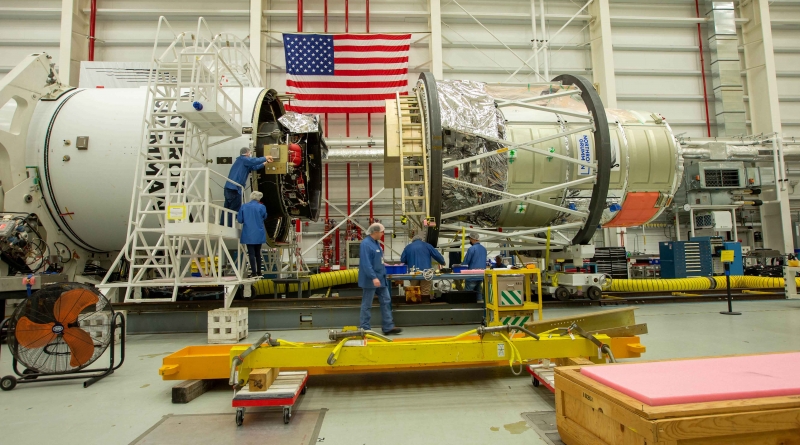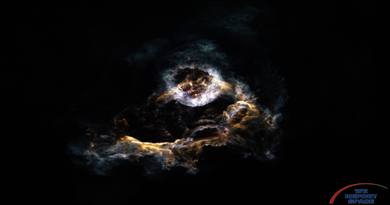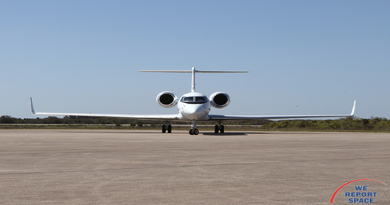What's On Board NG-16

Photo credit: NASA/Patrick Black
What’s on-board the next Cargo Resupply launch from Wallops Island? On Tuesday, the 10th of August, 2021, NASA and Northrop Grumman plan to launch the 16th Cargo Resupply Mission from Pad 0-A at the Virginia Space Port, on Wallops Island Middle Atlantic Regional Spaceport (MARS) just before 6:00 pm EDT during a 5 minute launch window. The Cygnus cargo vessel has been named the SS Ellison Onizuka in honor of the first Asian-American Astronaut. The spacecraft will be carrying more than 8,200 pounds of supplies and science experiments for mission and is expected to arrive at the ISS about 36 hours later, August 12th at approximately 6:10 am.
During a Media briefing on August 1st, moderated by Stephanie Schierholz and David Brady at Johnson Space center, six of the the newest experiments and investigations were discussed by the primary investigators.
David Brady explained the goals focusing on Continuous Improvement. He shared that Space Station studies are providing information and developments for missions throughout the Solar System and possibly even travel beyond.
Michael Snyder of Made In Space was the first presenter and shared his study on the Redwire Regolith Print Study. The premise of the study is to take locally available material (Regolith from the Moon’s surface) and use 3-D printing technology to build material. This test will creat three slabs or sheets to be returned for testing and comparing the micro-gravity manufacturing results with earth based samples. The actual equipment will be a new print head and print plate for the existing machine already on-board the ISS. The samples will determine whether gravity has any effect on the quality of the product, look at fuzed deposition from an extrusion, determine what variations in temperature will have on manufacturing ranging from the lows to the highs of space and the lunar surface.
Dr. Ngan F. Huang, assistant professor of cardiothoracic surgery at Stanford University explained that their tissue growth experiment will be used to study muscle wasting. On earth this process can take decades to occur. One area that will be explored in micro-gravity is how whether muscle wasting is accelerated and if so it will be useful for the study of treatment, repair and possibly muscle development. The experiment will be conducted using tissue chips to cause primitive muscle fibers to grow over a 7 day period and examine this growth throughout the growth period.
Michael Salopek of Johnson Space Center discussed a next generation CO2 scrubber to be installed and run parallel with the existing system on-board the ISS. The new system will utilize a 4-bed system. The atmosphere in the ISS has contaminants in it which may lead to degradation of the currently used media. Donnie McCaghren of the Marshall Space Flight Center in Huntsville, AL added that Marshall has integrated external accessibility to the filters and that the new ones are stronger and more thermally stable. There is also a new valve in the system designed to be more resistant to Foreign Object Damage (FOD) and mentioned that a cleaning and maintenance process is in place to reduce the number of spares required with the current system. The new scrubber system will be studied in depth over the next year and will be watched over the next three or more years to determine it’s reliability.
Dr. Audrey Dussutour, director of research at the French National Center for Scientific Research presented the planned study of Slime Mold. The material, referred to as BLOB is part of an ESA experiment to determine the behavior of Slime Mold in a micro-gravity environment. approximately 5,000 similar experiments will be conducted on earth and operated by school students. The samples will only be allowed to grow for approximately 7 days which is controlled by the food available to them. They are expected to double in size each day and once the food is consumed will return to a dormant state. The test is completely sealed and the only involvement of the astronauts is to install it and provide the activation. This experiment will not be returned to earth.
Dr. Issam Mudawar, director of the Purdue University Boiling and Two-Phase Flow Laboratory discussed his fluid physics investigation. The reaearch will help create models and designs of future systems. The experiment will look at two phases of fluids and examine the phase changes as material flows within the test modules which will occupy a full size rack (floor to ceiling) on board the ISS. These modules will also be available for other investigations. These investigations are in preparation for lunar and Mars travel and bases.
The final presentation came from Dr. Alexandre Martin, professor of mechanical engineering at the University of Kentucky along with John Schmidt who is a mechanical engineering graduate student at the University of Kentucky. The experiment, known as KREPE is testing heat shields. The test medules will remain on Cygnus in an aluminum container, and when Cygnus is realeased for re-entry sometime in November. The sample will transmit data after release and as it heads towrd the Pacific. Data will continue to be transmitted for a period of time after reaching the surface but there isn’t a plan to retrieve any of the 12 inch capsules. Some of the objectives are to determine if there is a more affordable material, or design for the thermal protection system.

Stunning, full color photo book covering every east coast launch spanning 2014-2015, including the first-ever powered landing of a SpaceX Falcon 9 rocket.
More Info



